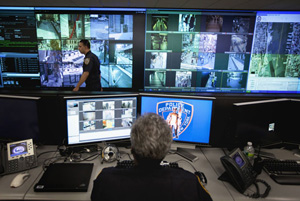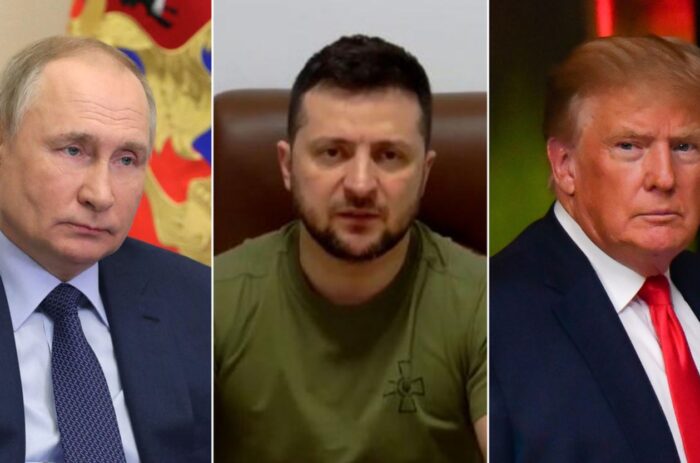redo Jump to...
print Print...
(by Judith Miller, The Wall Street Journal) – The Boston Police Department responded with extraordinary skill to last week’s marathon bombing, but some terrorism experts say that the attack, which killed three people and injured more than 200, may well have been prevented entirely had the perpetrators lived in New York City.
Part of the difference is a matter of numbers and resources. The New York Police Department has a vastly larger force – roughly 35,000 uniformed officers versus Boston’s 2,000 – and a far larger budget. The NYPD spent $330 million of its $4.6 billion annual budget in 2011 combating terrorism. Yet that is perhaps not New York’s most telling advantage.
In the dozen years since 9/11, the city has developed a counterterror program that is a model of how to identify and stop killers like the Tsarnaev brothers before they strike. The 1,000 cops and analysts who work in the NYPD’s intelligence and counterterrorism divisions, for instance, would likely have flagged Tamerlan Tsarnaev for surveillance, given Police Commissioner Ray Kelly’s insistence on aggressively monitoring groups and individuals suspected of radicalization.
New York cops almost surely would have monitored Tamerlan – the elder of the two brothers – if they had known that Russia had warned the FBI in 2011 that he was an Islamic radical, that he was potentially dangerous, and that he had spent several months in Dagestan, a Russian republic with an Islamic insurgency, in 2012. “We would have been very reluctant to shut down an investigation if we knew all that it seems the bureau knew or could have known, especially once he had traveled to a region of concern,” says Mitchell Silber, the former director of intelligence analysis for the NYPD, who now works at K2, a New York-based private security firm.
In August 2007, Mr. Silber and Arvin Bhatt, then also an NYPD analyst, wrote what was then considered a controversial police-department report arguing that with the attrition of al Qaeda’s leadership, the primary threat to New York would come from “homegrown” Muslims under the age of 35 who had become Islamists in the West.
Based on an analysis of 11 plots against Western targets between 9/11 and 2006, their report, “Radicalization in the West: The Homegrown Threat,” concluded that most of the plotters were “unremarkable” citizens who had undergone often rapid radicalization, 90% of them in the West. The analysts identified a pattern of radicalization and listed common characteristics before a person committed a terrorist act. The report also warned: “The Internet is a driver and enabler for . . . radicalization.”
Since 2007, the NYPD has looked for such warning signs among New York’s Muslim population of 600,000 to 750,000 – about 40% of whom are foreign-born – as homegrown terrorist plots have increased. In 2005, there was one homegrown terrorist plot in the U.S.; by 2010, there had been 12.
Tim Connors served as an Army officer in Afghanistan and now works for CAAS LLC, a New York-based consulting company that, among other things, trains police officers. He says that Tamerlan Tsarnaev fit the NYPD’s radicalization profile perfectly. “His behavioral changes alone – never mind his overseas trip and Russia’s warning to the FBI that he was a radical – would have been more than enough to trigger NYPD scrutiny,” Mr. Connors says.
For instance, Tamerlan experienced a “family crisis” when his father left his mother in 2010 and then returned home to Dagestan. The 2007 NYPD report warned that such incidents often trigger radicalization. He also began exhibiting what the report calls “self-identification,” when a person begins exploring radical ideas and dramatically changing his behavior – for instance, “giving up cigarettes, drinking, gambling and urban hip-hop gangster clothes” in favor of “traditional Islamic clothing” and “growing a beard.”
Another red flag would have been Tamerlan’s ejection from his local mosque, the Islamic Society of Boston, as reported by the Los Angeles Times. The paper disclosed last week that the elder brother was thrown out of the mosque after a shouting match with the imam during a Friday prayer service. The paper quoted several worshipers as saying that Tamerlan had yelled at the imam for having cited Martin Luther King Jr. as a role model for Muslims. Tamerlan protested, the paper said, because King was “not a Muslim.”
The NYPD report cites “withdrawal from the mosque” as an indication of the onset of the “indoctrination” phase of radicalization. That is when a believer rejects traditional Islamic mentors in favor of “Salafist,” or more radical, fundamentalist preachers and friends.
In New York, Tamerlan Tsarnaev’s mosque quarrel and his sudden behavioral changes might well have been reported by concerned worshipers, the imam himself, or other fellow Muslims. The NYPD maintains close ties to Muslim preachers and community leaders, as well as a network of tipsters and undercover operatives.
Once the department had Tamerlan under surveillance, the NYPD’s cyberunit might have detected his suspicious online viewing choices and social-media postings. Other detectives might have picked up his purchase of a weapon, gunpowder and even a pressure cooker—an item featured in an article, “How to Build a Bomb in the Kitchen of Your Mom,” in the online al Qaeda magazine Inspire.
Even if the NYPD hadn’t been watching Tamerlan, it might have been tipped off to such suspicious purchases thanks to its Nexus program. Since the program’s launch in 2002, the department has visited more than 40,000 businesses in the metropolitan area, encouraging business owners and managers to report suspicious purchases or other activities potentially related to terrorism.

A New York Police Department officer watches video feeds in the Lower Manhattan Security Initiative facility in New York September 1, 2011.
The NYPD also maintains a “Ring of Steel,” a network of 4,000 sophisticated security cameras that feed information into a central monitoring system to detect questionable or unlawful activity. It is at least possible that these cameras might have alerted officials to the presence of the abandoned backpacks containing the bombs. The department has focused its camera network on the Financial District in Lower Manhattan and on such iconic sites as the Empire State Building and Grand Central Terminal. Yet at least 220 cameras have been installed with views of Central Park, where the New York Marathon reaches its finish line.
Finally, there is the NYPD’s continuing effort to understand Muslim communities and follow tips and leads by sending plainclothes officers to mosques, restaurants and other public venues where Muslims congregate. This effort – which follows court-ordered guidelines – might have secured information preventing last week’s bombings.
Reporters for the Associated Press won a Pulitzer Prize last year for a series of articles critical of the NYPD’s surveillance program. But the NYPD credits the program with helping to thwart as many as 16 terrorist attacks on the city since 9/11. That sort of police work isn’t singled out for prizes, but maybe it will inspire police in other American cities – wondering about stopping their own version of the Tsarnaevs – to take a fresh look at how New York does it.
Ms. Miller is an adjunct fellow at the Manhattan Institute, a Fox News contributor and a City Journal contributing editor. This article was adapted from City Journal.
Published April 24, 2013 at The Wall Street Journal. Reprinted here May 2, 2013 for educational purposes only. Visit the website at wsj.com.
Questions
1. What “red flags” does Ms. Miller say terrorist Tamerlan Tsarnaev displayed that the NYPD (New York City Police Department) would have picked up on, based on the warning signs the department has used since 2007 to spot potential terrorist plots?
2. What is the main idea of Ms. Miller’s commentary?
3. What is the NYPD’s Nexus program? (see para. 14) Should every city implement such a program? Explain your answer.
4. The NYPD looks for red flags that are signs of potential terrorists, then keep those people under surveillance. What do you think of their methods?
5. What do you think of Ms. Miller’s assertion that based on their intelligence and counterterrorism work, the NYPD could have prevented the Tsarnaev’s terrorist attack?

